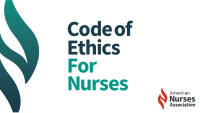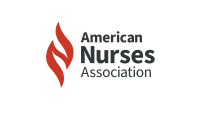“Even in an age of hype, calling something ‘the blockbuster drug of the century’ grabs our attention. In this case, the ‘drug’ is actually a concept—patient activation and engagement—that should have formed the heart of health care all along.”
– Susan Dentzer
There is growing awareness that engaging patients, families, and consumers as partners in designing healthcare systems and developing health policy may have a significant impact on cost and outcomes. Patient engagement has been defined as “patients, families, their representatives, and health professionals working in active partnership at various levels across the healthcare system . . . to improve health and health care.” Importantly, this definition is understood to include “other consumers and citizens.”
Given the importance of patient and family engagement, the American Nurses Association’s Strategic Plan for 2017-2020 includes a focus on nurses partnering with consumers. One of the three goals set forth in the Strategic Plan is to Leverage the ANA Enterprise to position nurses as integral partners in consumers’ health and healthcare journeys. Objectives for this goal include educating registered nurses “to assume new roles that transform the nurse-to-consumer relationship,” and partnering with “consumer-focused content providers and educators to dramatically increase nurse-to-consumer positioning and awareness.”
Research is underway to identify effective methods to engage patients and consumers in redesigning and improving the healthcare system. The Patient and Family Engagement Framework (Framework) is an important tool to inform this process. The Framework identifies three levels of engagement – direct care, organizational design and governance, and policymaking – and describes a continuum of engagement ranging from consultation and involvement through partnership and shared leadership. Under this Framework, engagement at the policymaking level is conceptualized as including consumer organizations representing the views of a broader constituency.
In another effort, the American Institutes for Research (AIR), with the Gordon and Betty Moore Foundation, developed a Roadmap for Patient and Family Engagement in Healthcare Practice and Research (Roadmap). The Roadmap describes eight strategies for patient and family engagement, ranging from preparation of patients, families, and clinicians through the development of legislation, regulation, and public policy. The Roadmap was developed to engage a wide range of stakeholders, including individuals providing healthcare services and leaders of healthcare organizations as well as policymakers and consumer advocacy groups. Like the Framework, the Roadmap recognizes the essential role of the consumer and consumer organizations.
In addition, many organizations are now calling for a greater consumer voice in health policy development A few examples:
- Consumers Union has established the Healthcare Value Hub to enhance the voice and experience of consumers in conversations about healthcare system reform.
- Consumer Catalyst works to give consumers an organized voice to help transform the health system. Earlier this year they launched the Center for Consumer Engagement in Health Innovation to further this effort, which includes developing a toolkit for delivery systems to implement strategies to engage consumers.
- The Office of the National Coordinator for Health Information Technology has developed strategies to support consumer engagement in e-health and health information technology.
ANA is committed to incorporating the voice of the consumer in its work. As the nation’s most trusted professionals, nurses are in a unique position to connect with consumers, patients, and advocacy organizations to ensure that consumers are fully represented in developing and evaluating health policy. For more information, please contact janeclare.joyner@ana.org.
Jane Clare (JC) Joyner is the senior policy advisor, health systems and regulatory policy in the Department of Health Policy at the American Nurses Association.
Selected references
American Nurses Association. Strategic Plan 2017-2020. Silver Spring, MD. 2016
Carman KL, Dardess P, Maurer M, et al. Patient and family engagement: a framework for understanding the elements and developing interventions and policies. Health Aff. 2013;2(2):223-31.
Carman KL, Dardess P, Maurer ME, et al. A roadmap for patient and family engagement in healthcare practice and research. Palo Alto, CA: Gordon and Betty Moore Foundation; 2014.
Consumers Union. Healthcare Value Hub.
Community Catalyst. Center for Consumer Engagement in Health Innovation.
Community Catalyst. Meaningful consumer engagement: a toolkit for plans, provider groups and communities: the transformative power of consumer engagement.
Dentzer S. Rx for the “blockbuster drug” of patient engagement. Health Aff. 2013;32(2):202.
Gallup Poll. Honesty/ethics in professions. December 2015.
Gold M, Hossain M, Magnum A. Consumer engagement in health IT: distinguishing rhetoric from reality. EGEMS. 2015;3(1):1190.
Ricciardi L, Mostashari F, Murphy J, et al. A national action plan to support consumer engagement via e-health. Health Aff. 2013;32(2):376-84.


















